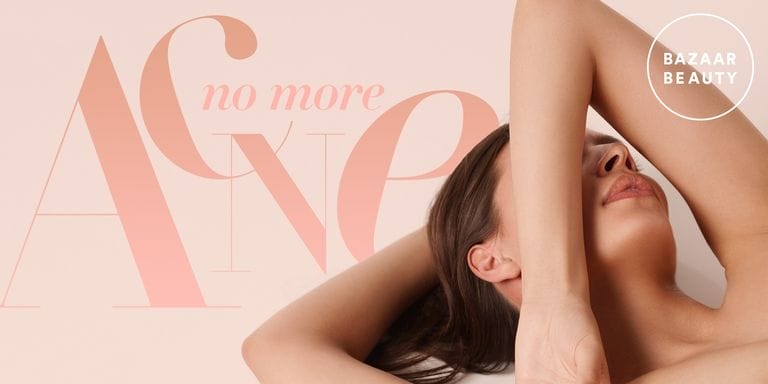
Image by Getty Jonathan Storey / Perri Tomkiewicz
When it comes to skin complaints, there aren’t many things that rank higher on the average beauty fan’s list than acne. It’s annoying, it’s painful, it always seems to crop up at the worst possible moments, and no matter how honed your skincare routine, or how old you get, you never seem to be completely free from it. Unfortunately, we can’t tell you that Breaking news! The cure for acne has been found! You’ll never have another zit again! Sorry. What we can do, though, is show you the right way to handle acne when it does pop up, and how to make sure that those instances are as rare as possible.
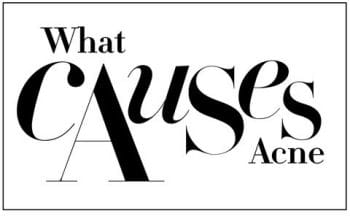
We’ve all heard about different kinds of acne: “stress acne” and “hormonal acne”; cystic, and pustular, and inflammatory; blackheads and whiteheads. Just thinking about all of the different ways your skin can be screwed up is overwhelming, but on a basic level acne is a lot less complicated than it sounds.
“The reality is that all acne has a similar source,” says dermatologist Doris Day. It all starts in your pores; they each have their own tiny lining of skin cells which are designed to be sloughed off and replaced with new ones on a regular basis. But, just like the rest of your skin sometimes needs a little nudge to clear away dead skin cells in a timely fashion, your pores can also let their work (and those dead cells) pile up. Those backed up cells, along with oil and product residue form a blockage in the pore – for whiteheads the pore closes off, while in blackheads it remains exposed and the gunk inside of it oxidizes and turns black. In either case, the blocked pore is where the real acne action starts.
“At the bottom of most pores, there is bacteria,” Day explains. There are many different kinds of bacteria that may hide down there, including the p.acnes bacteria that’s famous for its relationship with acne, but they all thrive in the low-oxygen environment that a plugged pore provides. “The bacteria starts to wake up and become more active and eats the oil and that protein that’s trapped in the follicle. That becomes your pimple.” What kind of pimple, though, really depends on your body. Those angry, white-tipped pimples that appear at the surface level of skin aka pustules are the result of white blood cells that start to kill off that bacteria resulting in, you guessed it, pus. If you’re prone to deeper zits that form a little knot under the skin instead of developing a head, you’re dealing with cystic acne. “The cystic component comes from a stronger immune response that makes [the pimple] grow bigger and even develop a lining.” Most people experience both forms at least some of the time, but different internal factors from medications to pregnancy can also alter your body’s responses intermittently.
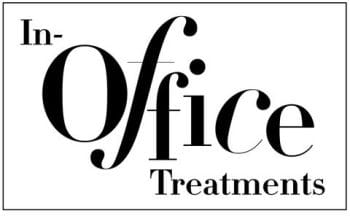
If you're ready to get serious about banishing acne, the dermatologist's office should be your first stop. Since clogged pores are at the root of all acne iterations, one of the best treatments is regular exfoliation to keep those follicles clear. Chemical exfoliation can be a major skin savior on this front, using salicylic or glycolic acids at a much higher dose than you can get over the counter to break down dead skin cells and sweep them away.
For bacterial issues, treatments like Isolaz and IPL (Intense Pulsed Light) can both be effective. The former uses a combination of vacuum pressurization and light therapy to lift away dirt and oil, help open up skin cells making them more receptive to topical treatments, and light therapy to kill off the bacteria hiding out inside of pores. IPL skips over the suction to send focused wavelengths of light that can send p. acnes packing. How many treatment sessions you need of either option can vary depending on the severity of your symptoms and other factors like skin tone, but most doctors recommend a set of 3-5 treatments, over the course of six months.
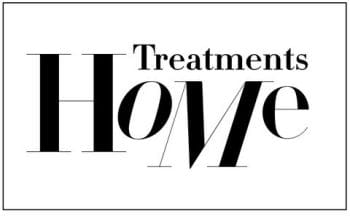
When it comes to treating sudden breakouts (you know, the kind that seem to show up any time you have an import event coming up) the good news is that there are plenty of effective drugstore options. “Benzoyl peroxide is good because you don’t really develop a resistance to it, and even at a very low concentration, like 2%, it will knock out bacteria,” Day says. As an added bonus, benzoyl peroxide also has some anti-inflammatory properties, so as it’s taking down the bacteria that are keeping your pimples puffed, it can also help take their size and redness down a notch. The issue, as anyone who has ever ruined a pillowcase with spot treatment can attest, is that benzoyl peroxide also brings bleaching power to all kinds of fabrics, so you have to be judicious about when and how you use it. “I tend to like benzoyl peroxide better in a wash, especially for the chest and back, rather than as a leave-on product,” Day says. She also recommends resisting the urge to seek out powerhouse percentages. Some brands sell versions with as high as 10% benzoyl peroxide, which may sound tempting, but it doesn’t mean your blemishes will clear 5 times faster than a 2% solution; in fact, it might just make things worse. “If you go for a higher concentration, it makes it more drying and more irritating, but it doesn’t necessarily make it more effective,” Day warns.
While you might think of salicylic acid as interchangeable with benzoyl peroxide based on how often it shows up in acne treatments, they actually perform completely different functions. While benzoyl peroxide goes to work bacteria busting, salicylic acid (and its cousin glycolic acid) gets busy exfoliating away the dead cells that keeps pores blocked. “They’re not actually treating the acne, they’re just helping to exfoliate,” explains Day. That doesn’t mean you should leave acids out of your acne fighting arsenal, though. “I almost never use only one medicine for acne,” Day says, since different ingredients perform such different functions. Instead, try a combination of benzoyl peroxide and 2% salicylic acid to target both major contributors to acne, applying one first and allowing it to dry for a minute or two before applying the other.
Of course, as they say, an ounce of prevention is worth a pound of cure, so the most effective treatment for acne is not to wind up with clogged pores at all. Your best long-term tool to that end is the dermatological Swiss Army knife that is retinol. Day explains, “Retinol will work on all types of acne because it helps promote normal skin turnover. It helps those skincells slough and not get clogged so you don’t get the acne to begin with.”

It seems like every few months a new study comes out to tell you that everything you love is giving you acne: Chocolate! Gluten! Meat! Wine! While Day emphasizes that acne is still being heavily studied and many questions about its causes remain up in the air, there isn’t currently enough evidence to back up claims that any given diet staple is making a major contribution to your skin woes (barring allergic reaction, that is) with one possible exception. “The only food that we’ve been able to somewhat localize to acne is dairy,” Days says, though she points out that even this conclusion is controversial. “If you have a lot of dairy in your diet and your acne is not responding to treatment, then maybe consider dropping dairy to see if it makes a difference. It’s not true for everyone, but I find when I’m doing everything else and the patient’s just not improving, sometimes if you drop dairy you can see a difference.”
It’s not just a matter of what you put in your body, the things you put on your body can also make a big difference in your incidence of acne, and we’re not just talking skin and makeup products here. “Anything that you apply on your hair ends up on your face,” Day warns. “Sometimes you’ll get things look like acne but they’re not really acne, so if I see acne that’s really around the periphery of the face, I look at hair products and shampoos, which can create a rash that looks like acne.” Products like hairsprays as well as waxes from pomades and oils from shin products can all have an occlusive effect, meaning that the can form a barrier that prevents sebum and skin cells from escaping the pore the way they’re supposed to. To help ward off these issues use your hand or a tissue to keep sprays from landing on your face, particularly areas close to the hairline, and pay special attention to them when you cleanse your face at the end of the day.
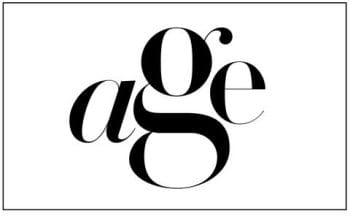
While the kinds of acne you get at 30 may not be that different than the kinds you got at 15, the way you treat it may need to grow up. “Your skin tends to get drier as you get older,” Day explains, which means that treatments that you could handle in high school may suddenly leave your skin irritated and flaky. This is particularly annoying considering that adult pattern acne (which tends to show up more along the jawline and neck than teenage-era T-zone splotches) can also be harder to treat. Rather than doubling down on potentially irritating pimple-drying ingredients, scale back to consistent application of lower doses and consider integrating a prescription medication. Hormonal birth control pills prove effective for many women, as has spironolactone, an androgen blocker that wards off certain hormones, like testosterone, which may contribute to acne.
Anti-inflammatory treatments like topical dapsone may also be helpful in conjunction with your normal zit-fighting regimen to help pull back the reigns of redness and irritation, as well as handling other faux-acne skin problems. “In your 30s you can start to grow into rosacea. Rosacea can look like acne, but the treatments for acne can irritate it,” says Day. The best plan? “If your acne isn’t clearing with common treatments, it’s always a good idea to see your dermatologist to make sure that you really are dealing with acne and not something else.”
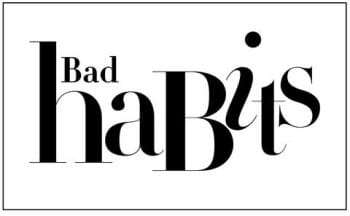
As we all know, getting acne treatment and prevention right is only part of the equation – you also have to avoid those bad skincare habits that make acne worse. And we bet you can guess what the number one commandment is. “The worst thing you can do for a pimple is pick at it, which creates more inflammation, and that can even make it feel more cystic,” says Day. “A lot of times when I have people come in and they’ve picked at their acne, they say there’s something in there, it has to come out. There’s actually nothing in [the pimple]. What happens is the immune response creates inflammation and that inflammation creates fluid buildup between the cells.” So when you get squeeze-happy with that obnoxious, swollen spot on your chin, all you’re really doing is causing more of that fluid to build up, making your blemish bigger. “You really cannot get it out, it just has to calm down,” says says.
Other skin sins you’re almost definitely committed: substituting your medicine cabinet for skincare. “Rubbing alcohol and peroxide,” Day laments. “People think they’re sanitizing their skin or they’re drying it out; those have zero effect on the bacteria that causes acne. They really do dry and irritate the skin, but they do nothing to acne.” Likewise, that old DIY trick of using toothpaste on a pimple is probably best left in your bathroom cabinet. “Toothpastes now have whitening products in them that can be irritating,” says Day. Even non-whitening version often contain chemicals and abrasives that can make acne worse. Ultimately, Day says, “There are better acne products on the market than toothpaste.”
Another famed DIY can also potentially have an effect on your acne is everybody’s favorite multi-purpose wonder oil, coconut oil. “It does have some anti-inflammatory and antioxidant properties, it does have some effect against the bacteria that causes acne, but it can also block pores and can be allergenic.” says Day. “I would say use it with caution if you have acne.”




